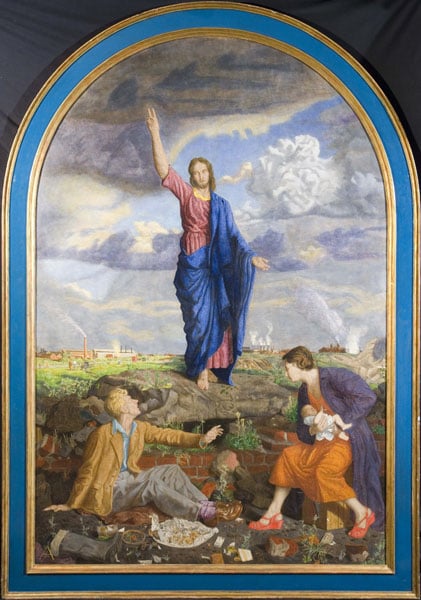Allen’s Rubbish Dump is the closest to a spiritual picnic I know of. Christ’s stunning appearance in a wasteland suggests life without beauty when industry pollutes the environment. It is unclear if the roiling clouds are suggesting an approaching apocalypse.
The subject is a parody of the medieval garden or hortus conclusus, an allegorical medieval garden extolling Christian virtue. But the setting is utterly unpicnicky, a fallen world. There is no grass, no shade, and no burbling stream. The luncheon is meager. It is only Jesus who will save humanity and the environment, perhaps.
The rubbish dump and the smoke of the Blackpool factories suggest Allen’s disapproval of modern Britain’s degeneration. Allen is saying that civilization needs a Christian resurrection.
In 1922, T.S. Eliot’s Waste Land portrayed England in a moral quandary; thirty-three years later, Allen reinforces the notion of a necessary Christian revival because the painting was intended as an altarpiece for an Anglican Church. But it’s unclear if the painting was ever installed, and it dropped from sight until exhibited at Wolverhampton Art Gallery in 2008.
Featured Image: George Warner Allen. The Rubbish Dump, A Black Country Altarpiece (1955), oil on canvas. Wolverhampton Art Gallery, Wolverhampton, GB. Estate of George Warner Allen

